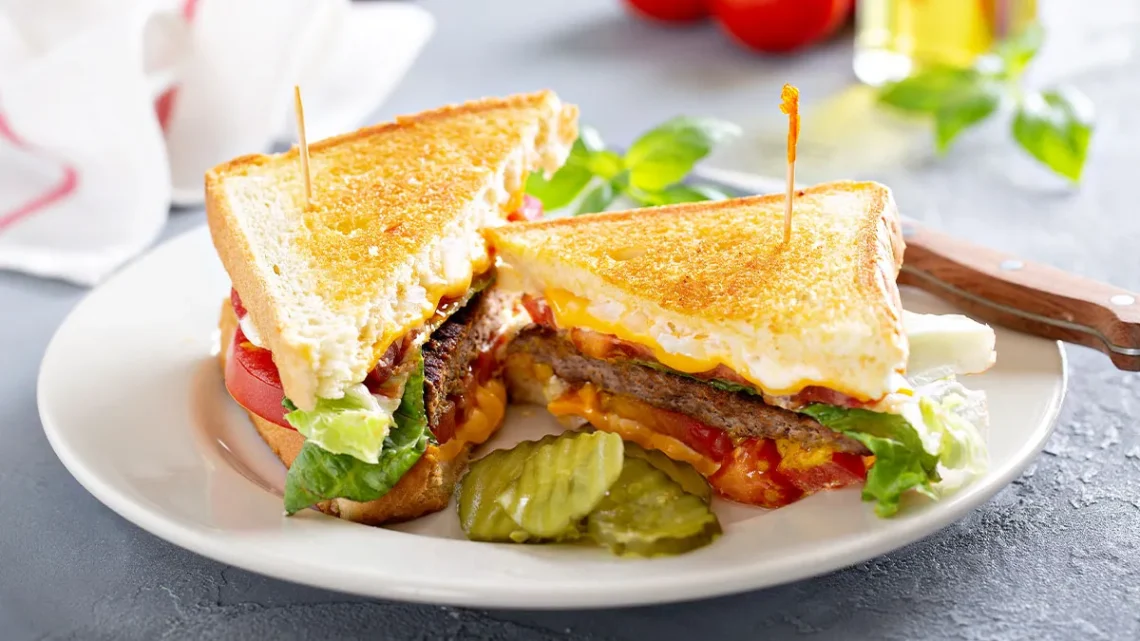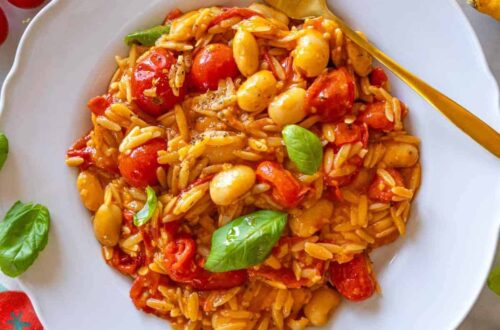What Makes a Patty Melt So Special?
A patty melt is more than just a burger—it’s a nostalgic, diner-style masterpiece that combines the best of a grilled cheese sandwich with a juicy beef patty. Picture this: caramelized onions, melted cheese, and a perfectly seared patty, all nestled between crispy, buttery rye bread. It’s the kind of meal that feels like a warm hug, evoking memories of cozy diner booths and jukebox tunes. This article dives deep into everything you need to know about crafting the perfect patty melt at home, from its history to pro tips for nailing that classic flavor.
The History of the Patty Melt
A Diner Classic Born in America
The patty melt traces its roots to mid-20th-century American diners, likely emerging in the 1940s or 1950s in California. Often credited to Tiny Naylor’s, a Los Angeles-based diner chain, this sandwich was a creative twist on the hamburger, blending it with the gooey allure of grilled cheese. Its enduring appeal lies in its simplicity—affordable ingredients transformed into something indulgent and unforgettable.
Why It’s More Than a Burger
Unlike a traditional burger with its bun and toppings, the patty melt swaps the bun for rye bread and leans heavily on caramelized onions for flavor depth. This distinction makes it a unique comfort food, offering a satisfying crunch and a rich, savory profile that’s hard to beat. It’s a dish that tells a story of American ingenuity and diner culture.
Ingredients for the Perfect Patty Melt
Essential Components
To craft a patty melt that rivals your favorite diner’s, you’ll need a handful of high-quality ingredients. Each one plays a crucial role in achieving that iconic flavor and texture.
- Ground Beef: Opt for an 80/20 blend (80% lean, 20% fat) for a juicy, flavorful patty.
- Rye Bread: Its tangy, slightly sour flavor complements the richness of the beef and cheese.
- Swiss or American Cheese: Swiss is traditional for its nutty melt, but American offers a creamier texture.
- Onions: Yellow onions, caramelized low and slow, add sweetness and depth.
- Butter: For slathering on the bread to achieve golden, crispy perfection.
- Salt and Pepper: Simple seasonings to let the ingredients shine.
Optional Add-Ons for a Twist
While purists may stick to the classic recipe, you can elevate your patty melt with these additions:
- Mushrooms: Sautéed for an earthy, umami kick.
- Bacon: For extra smokiness and crunch.
- Thousand Island Dressing: A nod to some diner versions, adding a tangy creaminess.
Step-by-Step Guide to Making a Grilled Patty Melt
Step 1: Caramelize the Onions
Start with the onions, as they take the longest. Slice one large yellow onion thinly and cook it in a skillet over low heat with a tablespoon of butter and a pinch of salt. Stir occasionally for 20–30 minutes until the onions are soft, golden, and sweet. This step is key to that diner-style flavor.
Step 2: Form and Season the Patties
While the onions caramelize, shape ¼-pound portions of ground beef into thin, oval patties that match the size of your bread slices. Season generously with salt and pepper. A thinner patty ensures a good beef-to-bread ratio and cooks evenly.
Step 3: Cook the Patties
In a hot skillet or griddle, cook the patties for about 3–4 minutes per side until they reach medium (160°F internal temperature). Avoid overcooking to keep them juicy. Set the patties aside and wipe the skillet clean for the next step.
Step 4: Assemble the Sandwich
Butter one side of each rye bread slice. On the unbuttered side, layer a slice of cheese, a beef patty, a generous scoop of caramelized onions, and another slice of cheese. Top with another slice of bread, buttered side up. The double cheese creates that gooey, melty texture.
Step 5: Grill to Perfection
Heat your skillet over medium heat and place the assembled sandwich in it. Cook for 2–3 minutes per side, pressing gently with a spatula, until the bread is golden and the cheese is fully melted. Slice diagonally for that classic diner presentation.
Pro Tips for a Diner-Worthy Patty Melt
Nail the Bread-to-Patty Ratio
The bread should be sturdy enough to hold the fillings but not so thick it overwhelms the patty. Rye’s distinct flavor is non-negotiable, but if you’re in a pinch, sourdough can work as a substitute. Aim for a patty that’s slightly larger than the bread to account for shrinkage during cooking.
Don’t Skimp on the Butter
Butter is the secret to that crispy, golden exterior. Spread a thin, even layer on the outside of each bread slice before grilling. For extra flavor, try using salted butter or even a garlic-herb compound butter.
Perfect Your Caramelized Onions
Patience is key for caramelized onions. Cook them low and slow to avoid burning, and deglaze the pan with a splash of water or balsamic vinegar for extra depth. If you’re short on time, you can prep onions in advance and refrigerate them for up to three days.
Patty Melt vs. Burger: A Comparison
| Feature | Patty Melt | Classic Burger |
|---|---|---|
| Bread | Rye bread, buttered and grilled | Soft burger bun, often toasted |
| Cheese | Swiss or American, melted fully | Optional, often cheddar or American |
| Onions | Caramelized, integral to flavor | Raw or grilled, optional |
| Cooking Method | Griddled like a grilled cheese | Grilled, griddled, or flame-broiled |
| Flavor Profile | Rich, savory, tangy | Customizable, often fresher with veggies |
Why Choose a Patty Melt?
A patty melt offers a more cohesive, indulgent experience than a burger. The grilled bread and melted cheese create a unified sandwich, while the caramelized onions add a sweet-savory balance that raw toppings can’t match. It’s perfect for those craving comfort food with a touch of nostalgia.
Pros and Cons of Making Patty Melts at Home
Pros
- Customizable: Adjust the cheese, bread, or add-ins to suit your taste.
- Affordable: Uses simple, budget-friendly ingredients.
- Comforting: Evokes diner vibes, perfect for cozy meals.
- Quick Prep: With pre-caramelized onions, it’s ready in under 20 minutes.
Cons
- Time-Intensive Onions: Caramelizing onions takes patience.
- Calorie-Dense: Butter and cheese make it a heavier meal.
- Bread Availability: Rye bread may not be in every pantry.
People Also Ask (PAA) Section
What’s the difference between a patty melt and a grilled cheese?
A patty melt includes a beef patty and caramelized onions, making it a heartier sandwich than a grilled cheese, which is just cheese and bread. The patty melt’s rye bread and diner-style preparation also set it apart.
Can you make a patty melt without rye bread?
Yes, but rye bread is traditional for its tangy flavor. Substitutes like sourdough or white bread can work, though they’ll alter the classic taste. Ensure the bread is sturdy enough to hold the fillings.
Is a patty melt healthy?
A patty melt is indulgent due to its butter, cheese, and beef. To lighten it up, use leaner beef, reduce butter, or opt for whole-grain bread. Pair it with a side salad for balance.
Where can I find the best patty melt?
Diners like Mel’s Drive-In in California or local greasy spoons often serve stellar patty melts. Check Yelp or Google Reviews for top-rated spots near you, or make one at home for a customized experience.
Where to Get the Best Ingredients
Local Grocery Stores
Most supermarkets carry ground beef, rye bread, and Swiss or American cheese. Look for high-quality, fresh ingredients—check the bakery section for fresh rye or visit a butcher for premium ground beef.
Specialty Markets
For artisanal rye bread or grass-fed beef, try Whole Foods, Trader Joe’s, or local farmers’ markets. These stores often stock unique cheeses like aged Swiss for an elevated patty melt.
Online Options
If rye bread is hard to find locally, online retailers like Goldbelly or Amazon Fresh deliver fresh or frozen bakery items. For bulk spices or specialty ingredients, Thrive Market is a great option.
Best Tools for Making Patty Melts
Essential Kitchen Equipment
- Cast Iron Skillet or Griddle: Provides even heat for perfectly crispy bread and juicy patties.
- Spatula: A wide, flat spatula helps flip the sandwich without breaking it.
- Meat Thermometer: Ensures your patty reaches a safe 160°F without overcooking.
Optional but Helpful Tools
- Mandoline Slicer: For uniformly thin onion slices that caramelize evenly.
- Butter Spreader: Makes applying an even layer of butter a breeze.
- Panini Press: For a quicker, evenly grilled sandwich (though less traditional).
My Personal Patty Melt Story
Growing up, my family’s weekend tradition was visiting a local diner where the patty melt was the star of the menu. I still remember the first time I bit into one—the crunch of the rye bread, the gooey cheese, and the sweet onions made me an instant fan. Years later, I set out to recreate that magic at home. After a few burnt onions and overcooked patties, I mastered the recipe shared above. Now, it’s my go-to comfort food when I need a taste of nostalgia.
FAQ Section
Can I make a vegetarian patty melt?
Yes! Swap the beef patty for a plant-based patty from brands like Beyond Meat or Impossible Foods. You can also use grilled portobello mushrooms for a hearty, meaty texture.
How do I store leftover patty melts?
Wrap leftovers tightly in foil and refrigerate for up to two days. Reheat in a skillet over low heat to maintain the crispy bread and melty cheese.
Can I freeze patty melts?
It’s best to freeze the components separately (cooked patties, caramelized onions). Assemble and grill fresh for the best texture, as frozen bread can become soggy.
What sides pair well with a patty melt?
Classic diner sides like fries, coleslaw, or a pickle spear complement the richness. For a lighter option, try a green salad or roasted veggies.
Can I use a different cheese?
Absolutely! While Swiss and American are traditional, cheddar, provolone, or even pepper jack can add a fun twist. Just ensure it melts well.
Troubleshooting Common Patty Melt Mistakes
Soggy Bread
If your bread turns out soggy, you might be using too much butter or not cooking at a high enough heat. Use a thin layer of butter and ensure your skillet is preheated to medium.
Dry Patty
Overcooking is the culprit here. Use a meat thermometer to check for doneness and aim for medium (160°F). A higher fat content (80/20) also helps keep the patty juicy.
Unevenly Melted Cheese
To ensure the cheese melts fully, layer it on both sides of the patty and cover the skillet briefly while grilling. This traps heat and speeds up melting.
Pairing Your Patty Melt with Sides and Drinks
A patty melt shines brightest with classic diner sides. Crispy fries or onion rings add crunch, while a tangy coleslaw balances the richness. For drinks, a frosty milkshake—chocolate or vanilla—evokes that retro vibe. If you prefer something lighter, an iced tea or craft soda pairs perfectly. For a grown-up twist, try a cold beer, like a crisp lager, to cut through the sandwich’s richness.
Conclusion: Why You’ll Love Making Patty Melts
The grilled patty melt is the ultimate comfort food, blending the best of burgers and grilled cheese into one unforgettable sandwich. With its crispy rye bread, juicy patty, and sweet caramelized onions, it’s a dish that’s as satisfying to make as it is to eat. Whether you’re recreating diner memories or crafting your own version, this guide equips you with everything you need to master the patty melt. So, fire up your skillet, grab some rye bread, and treat yourself to a meal that’s pure comfort on a plate.




